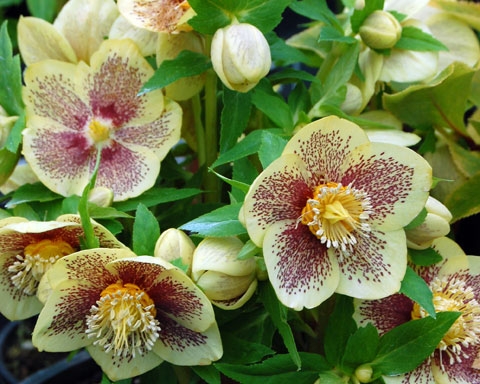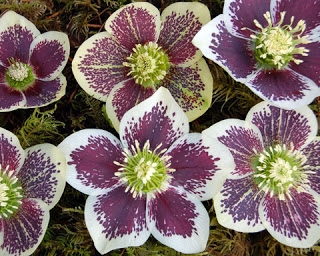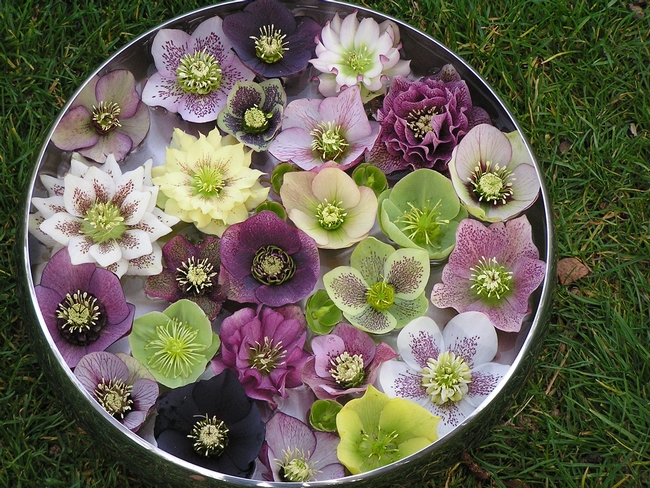A beautiful way to add color to your garden in winter and early spring is to plant hellebores. These perennials grow low to the ground in clumps usually no more than one- and one-half feet high, with distinctive leathery, dark-green leaves. Their flowers, about two inches across, appear in clusters that either face upwards or droop downwards. Old-fashioned varieties flower in shades of white and green, but newer hybrids broaden the hellebore color spectrum to include shades of pink, purple, yellow, red, gray and black, in single or double forms, and there are even some spotted and striped varieties.

An added bonus is that hellebores are deer-resistant and do not freeze in cold winters.
Happy hellebores will self-sow if their flowers (which are actually sepals, rather than petals) are not cut off after the blooms have faded; seed pods will form, eventually (usually in July) dropping their seeds close by the mother plant, where new baby plants will develop. Because the new plants develop so close to the original plant, it is a good idea to thin the babies out or transplant them.

Right now, when you are raking up leaves and cleaning up your garden, is a good time to cut off last year's hellebore leaves (most hybrid hellebores are stemless). If there are no buds showing yet, you can simply grab the leaves by the handful and cut them off. If the plant has started to bud, just cut off last year's leaves. It is not absolutely necessary to do this, as new leaves will cover the old ones, and the old leaves will eventually turn brown and can be swept away by hand. If you are in doubt, it is safe to cut anything (stems or leaves) that has turned brown. Cutting them off does make yard raking easier, as once the leaves are gone you can rake right over the plant. This gives the garden a cleaner look now and also later, when the new leaves and buds appear and the plant blooms.

While some early-blooming hellebores are already in flower, most will bloom between late January and early April. Look for them at your favorite nursery.
UC Master Gardeners of Butte County are part of the University of California Cooperative Extension (UCCE) system. To learn more about us and our upcoming events, and for help with gardening in our area, visit our website. If you have a gardening question or problem, email the Hotline at mgbutte@ucanr.edu (preferred) or call (530) 538-7201.